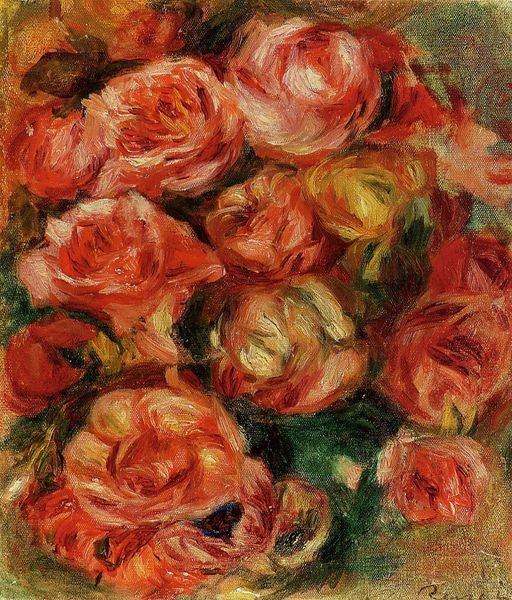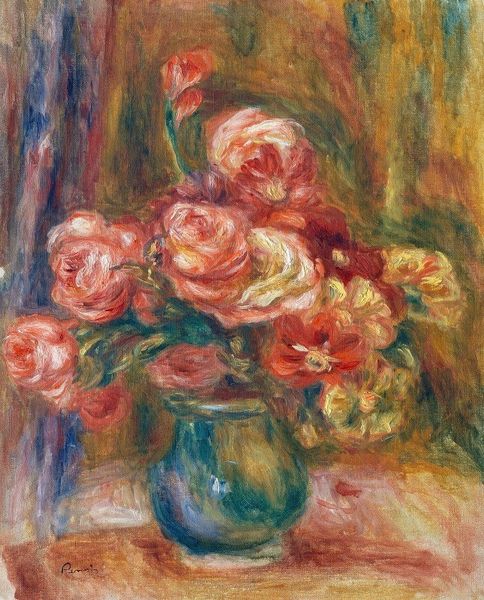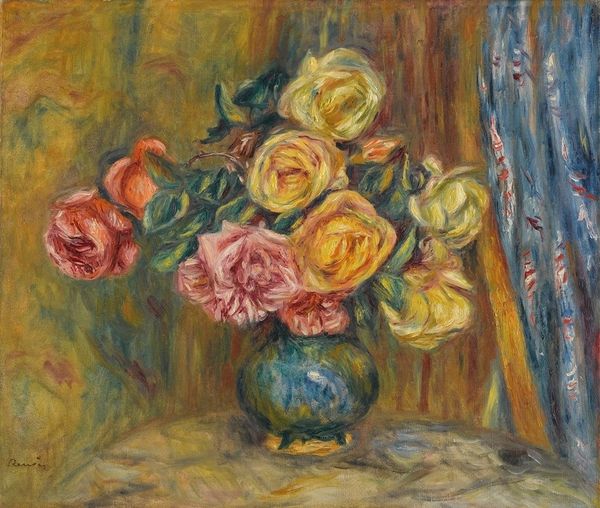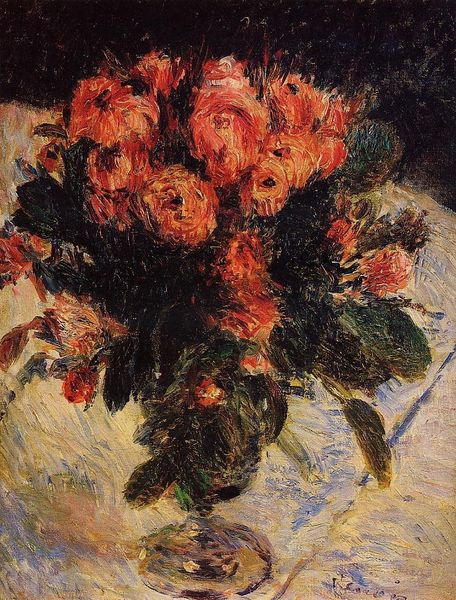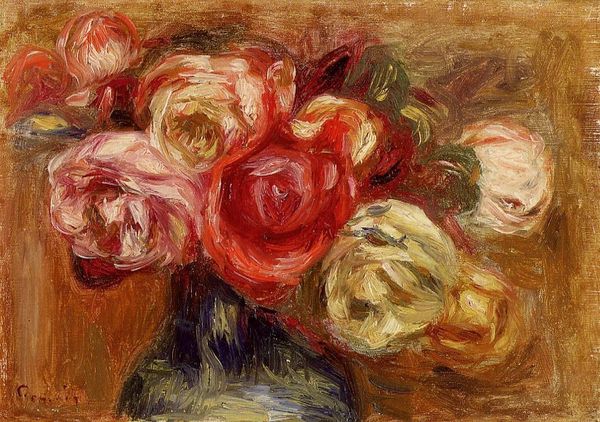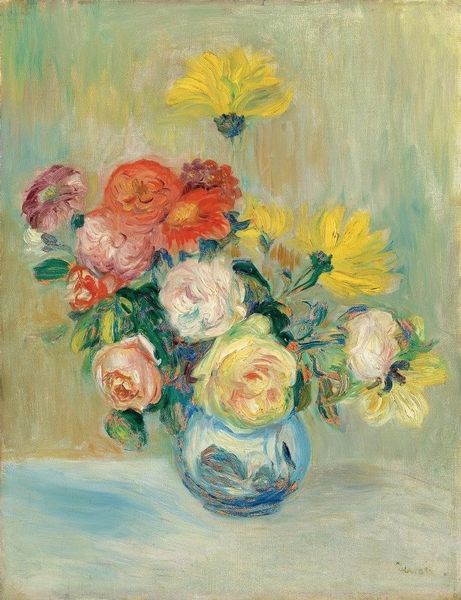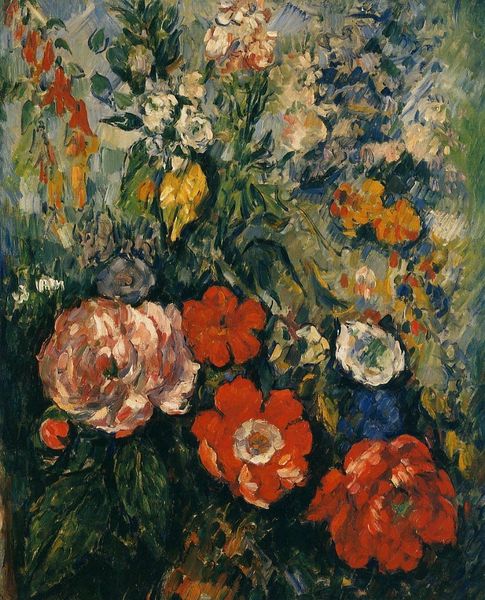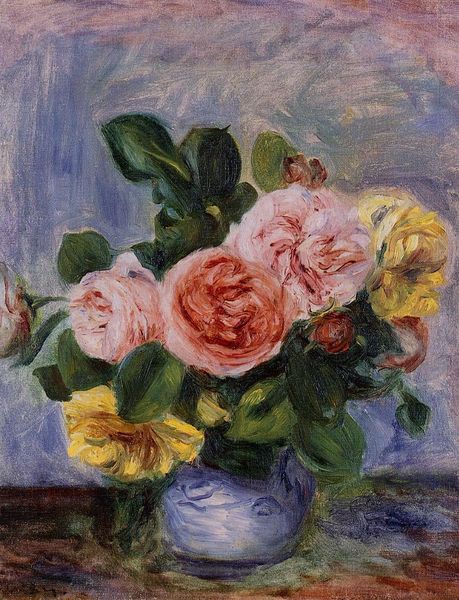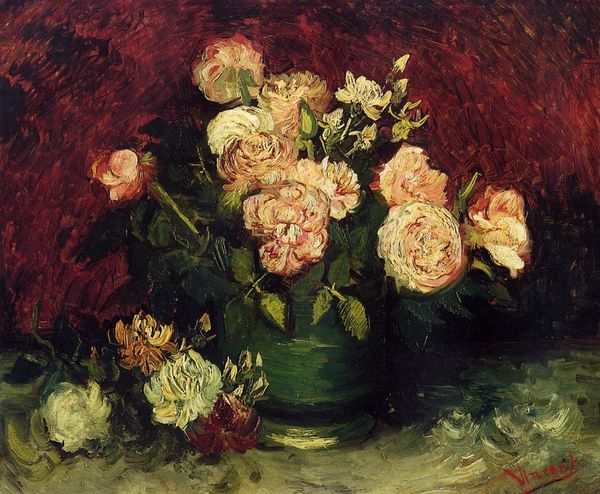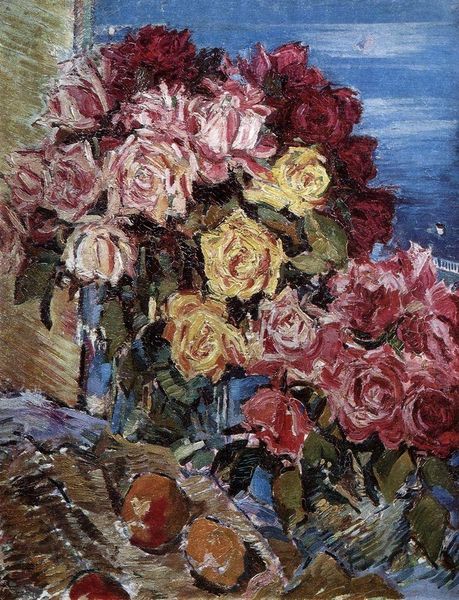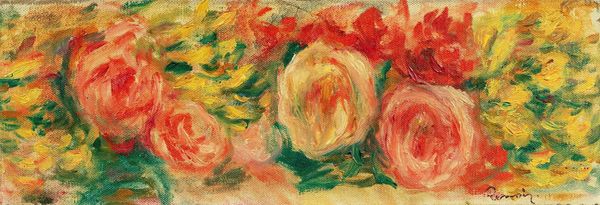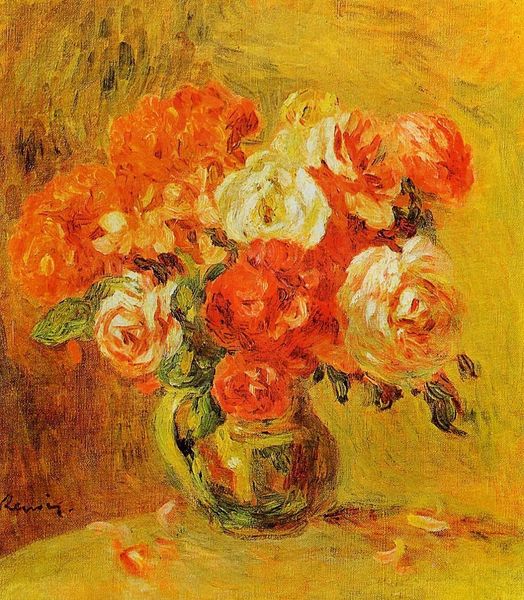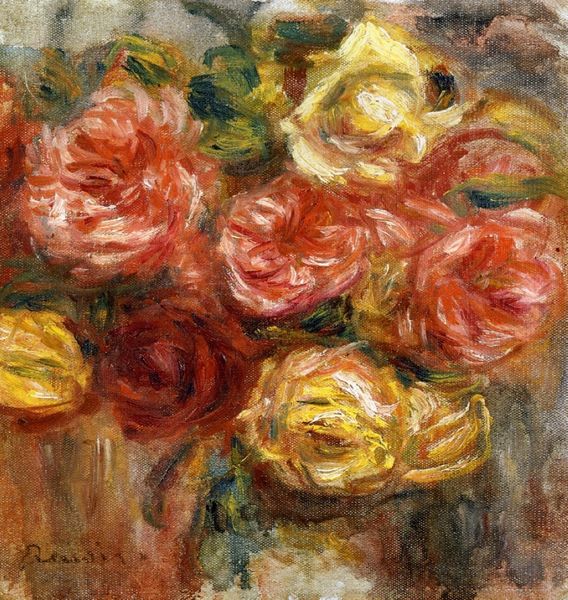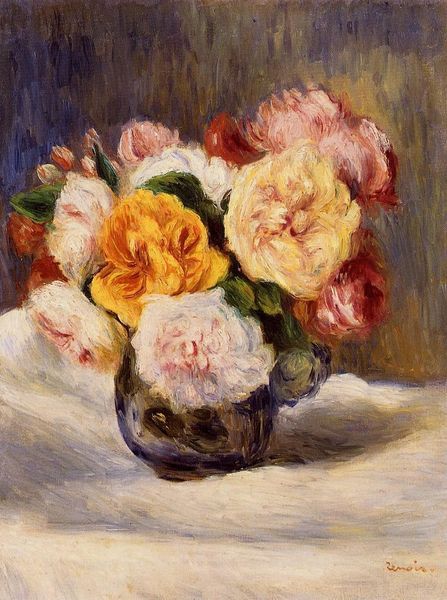
Copyright: Public domain
Curator: Konstantin Korovin's "Roses," painted in 1939, is a vibrant example of Russian Impressionism. Editor: Oh, what a beautiful riot of color! It feels like standing right in a rose garden, sun warming my face. Curator: Korovin was fascinated by capturing fleeting moments of light and atmosphere, and you can certainly see that in his broken brushstrokes. It's pure oil paint, laid on with a confident, almost impulsive hand. Editor: Impulsive, yes! But look closer. It's controlled chaos, wouldn’t you say? Like he's bottling the very essence of roses, their ephemeral beauty against the… is that a Delftware background? Curator: Good eye! It's likely a ceramic background or wall—these served as very fashionable items used in the decoration of studios and homes in the late 19th century. Editor: It lends a sense of domestic intimacy, doesn’t it? We are viewing them perhaps within a solarium during his end days of exile in France, dreaming back to a lost Russia. Korovin loved theater design—sets, costumes. And this feels… theatrical. A stage for the rose. Curator: That theatricality likely emerged from Korovin’s early experiences with set design at the Mamontov Private Russian Opera and later the Imperial Theatres. Note the thickness of the paint, its tactile quality. Editor: It practically begs you to reach out and touch it! I see the influence of Post-Impressionism as well, not just in the vibrant palette but in the almost Fauvist brushstrokes, wild, alive! Curator: Absolutely. We need to also acknowledge that many consider Korovin an important bridge between late-19th century Russian art and early 20th-century movements— his connections to both Wanderers movement and later association with the Mir Iskusstva were formative to Russian visual culture. Editor: Fascinating how the beauty of flowers, even on canvas, can still prompt questions and connect eras, places and feelings! I shall always remember this particular bouquet, bathed in a warm, painterly light. Curator: Indeed—this work encourages a wider investigation of art’s history, its makers and markets, to explore art’s complex social life.
Comments
No comments
Be the first to comment and join the conversation on the ultimate creative platform.
